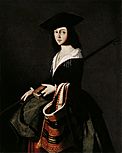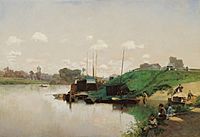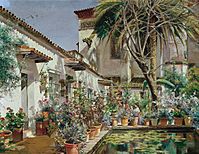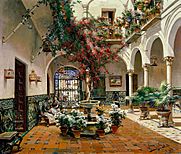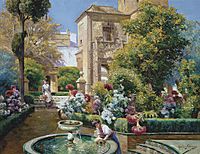Carmen Thyssen Museum facts for kids
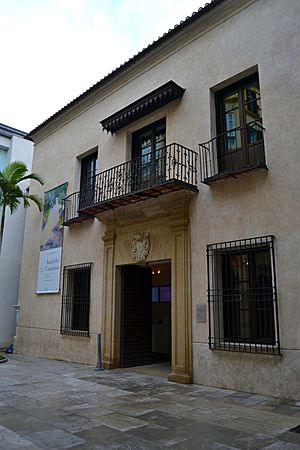 |
|
| Established | 2011 |
|---|---|
| Location | Calle Compañía, Málaga, Spain |
| Type | Art museum |
The Carmen Thyssen Museum (also known as Museo Carmen Thyssen Málaga) is a cool art museum located in the sunny city of Málaga, Spain. It's a special place because it mainly shows amazing Spanish paintings from the 1800s. Most of these artworks come from the beautiful region of Andalusia in southern Spain.
The museum's collection comes from Carmen Cervera. She is a famous art collector. Her personal collection is what you see at this museum.
The Thyssen family has another big art collection. It has been on display in the Thyssen-Bornemisza Museum in Madrid since 1992. Carmen Thyssen started collecting art on her own in the 1980s. Her unique collection is shown separately.
In 1999, she agreed to show many pieces from her collection in the Madrid museum for twelve years. During that time, they looked for a permanent home for her collection in Málaga. This museum, which used to be a building from the 1500s, opened its doors to visitors on March 24, 2011.
The Museum Building
The Carmen Thyssen Museum was specially designed for art. It was built around a beautiful 16th-century building called the Palacio de Villalón. This old palace was partly rebuilt to become part of the museum.
The museum has special rooms for its permanent collection. It also has two rooms for temporary art shows. The palace part of the museum holds older artworks. In total, the museum covers a large area of 7,147 square meters. About 5,185 square meters of this space is used to display art.
Ancient Discoveries
During the building work, exciting discoveries were made. Since 2005, archaeologists found many remains from the Roman era. These findings showed that people lived on this spot for a very long time. They lived there from the 1st to the 5th century AD.
This area was outside the main Roman city of Malaca. It had a large Roman villa. This villa included homes, factories for salting fish, and shops. Some cool things found were a huge fountain, possibly a nymphaeum. It was decorated with paintings of fish. They also found colorful geometric mosaics, pottery, coins, and parts of a bronze statue.
After being empty for a while, the site was used again in the 5th century. It was used for making fish products. Later, during the Byzantine time, it became a burial ground.
Amazing Artworks to See
The Carmen Thyssen Museum has many incredible paintings. These are some of the most important pieces you can find there:
- Niccolò Frangipane, Penitent, 1574
- Francisco de Zurbarán, Saint Marina, c. 1640-1650
- Alfred Dehodencq, A Confraternity in Procession along Calle Génova, 1851
- Marià Fortuny, Bullfight. Wounded Picador, c. 1867
- Manuel Ussel de Guimbarda, Rosquillo Sellers in Seville, 1881
- Guillermo Gómez Gil, The Reding Fountain; By the Fountain, c.1880-1885
- Raimundo Madrazo, Leaving the Masked Ball, c. 1885
- Martín Rico Ortega, A Summer's Day on the Seine, 1870-1875
- Emilio Sánchez-Perrier, Winter in Andalusia, c. 1880
- Ignacio Zuloaga, Bullfight at Éibar, 1899
- Darío de Regoyos, The Concha, Night-time, 1906
- Francisco Iturrino, The Bath (Seville), 1908
- Ramon Casas i Carbó, Julia, 1915
- Julio Romero de Torres, La Buenaventura, 1922
Gallery
-
Saint Marina by Francisco de Zurbarán, 1640-1650
-
North African Landscape by Marià Fortuny, 1862
-
A Summer's Day on the Seine by Martín Rico Ortega, 1870-1875
-
Leaving the Masked Ball by Raimundo Madrazo, c. 1885
-
Ladies in the Garden by Cecilio Plá y Gallardo, c. 1910
-
First Atrium of Santa Paula Convent, Seville by Manuel García y Rodríguez, c 1920-25
-
Interior Courtyard, Seville by Manuel García y Rodríguez, c 1920
-
The Garden of Alcázar Seville by Manuel García y Rodríguez, c 1920
See also
 In Spanish: Museo Carmen Thyssen Málaga para niños
In Spanish: Museo Carmen Thyssen Málaga para niños


